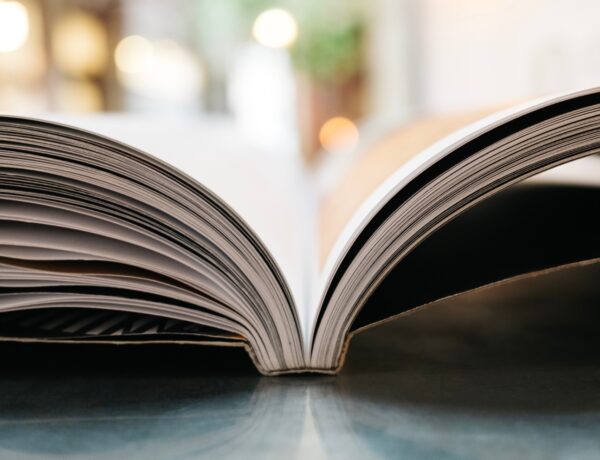Writer’s block is like that unwelcome guest at a party, turning up unannounced and often overstaying its welcome. It’s a familiar challenge that many writers, whether novices or seasoned professionals, face at some point. This dreaded block can slam the brakes on productivity, turning what should be a flow of creativity into a stagnant pool of frustration.
It’s not just about the inability to put words on a page; it’s also the lingering doubt and the dampening of creative enthusiasm that comes with it. However, there’s a silver lining. Overcoming writer’s block is possible by incorporating certain daily habits into one’s routine. These habits aren’t just about pushing through the block; they’re about nurturing a writing environment where ideas can flourish, and words can flow freely.
Habit 1: Establishing a Writing Ritual
Think of a writing ritual as a warm-up before a big game. It’s a set of actions that signals to the brain, “Hey, it’s time to get creative!” This ritual could be as simple as brewing a favorite cup of tea, arranging the desk, or playing some soft music. It’s about creating a consistent routine that, over time, kick-starts the creative process. When this ritual becomes a habit, just going through these motions can help spark the brain into writing mode, making it easier to transition into a flow state.
Habit 2: Frequent Reading
Reading is to writing what listening is to speaking. Diving into different books not only opens up a world of ideas and styles but also keeps the mind engaged and inspired. It’s like keeping the creative well full. Reading regularly can offer new perspectives, trigger ideas, and even help solve writing dilemmas. It’s not just about reading within one’s genre; exploring a variety of genres can broaden thinking and inspire new approaches to writing.
Habit 3: Daily Free Writing
Free writing is like a creative sprint – it’s writing without stopping to think, edit, or even structure. Set a timer for 10-15 minutes and just write. The idea here is to let go of the constraints and let the thoughts flow uninhibited. This practice is great for unclogging the mind and can lead to unexpected gems of ideas or phrases. It’s also a stress-free way to ease into writing each day, as there’s no pressure to produce something polished or complete. Over time, this habit can sharpen writing skills and build a reservoir of ideas.
Habit 4: Regular Breaks and Physical Activity
Physical movement is like a reset button for the mind. Taking regular breaks for some form of physical activity – a walk, a quick yoga session, or even some stretching – can work wonders. It’s about stepping away from the desk and getting the blood flowing. This movement not only refreshes the body but also clears the mind, often leading to those ‘aha’ moments where ideas suddenly click into place. Plus, it’s a healthy habit that counters the sedentary nature of writing. So next time the words start to blur, take a break and move around. It might just be what’s needed to get back on track.
Habit 5: Structured Social Interaction
Interacting with fellow writers or engaging in conversations with creative individuals can be incredibly stimulating. These interactions can be structured, like joining a writing group or attending a workshop, or they can be as casual as a chat over coffee. Sharing experiences, discussing ideas, or even venting about challenges can open up new perspectives and insights. It’s not just about getting feedback; it’s about being part of a community that understands the highs and lows of the creative process. These social interactions can be a source of inspiration, motivation, and support.
Habit 6: Creating an Inspiring Workspace
The environment where one writes can significantly influence creativity and productivity. An inspiring workspace doesn’t necessarily mean a perfectly tidy area with expensive equipment; it’s about creating a space that feels comfortable and stimulating. Personalize the workspace with things that spark joy and creativity – be it inspirational quotes, artwork, or a window with a view. Good lighting, a comfortable chair, and an organized desk can also reduce physical and mental stress, making writing sessions more enjoyable. Remember, this space doesn’t have to be static; it can evolve and change as one’s needs and preferences do.
Habit 7: Setting Realistic Goals
Setting realistic writing goals is like placing guideposts along a journey – they help maintain direction and motivation. Achievable targets can be as modest as writing a certain number of words per day or completing a scene. These goals provide a sense of accomplishment and prevent feelings of being overwhelmed, especially in the face of large projects. The key is to set goals that are challenging yet attainable, keeping the motivation alive and the writing progress steady. Remember, it’s not about how fast one writes, but about maintaining a consistent pace.
Habit 8: Embracing Imperfection in Early Drafts
Early drafts are like the first sketches of a painting – rough and far from perfect. It’s essential for writers to give themselves the freedom to write imperfectly in these initial stages. This approach helps bypass the paralysis often caused by perfectionism. By allowing oneself to write poorly, the focus shifts from quality to simply getting the ideas down on paper. This habit can liberate creativity and make the writing process more fluid. The refinement comes later in the editing stages, where one can sculpt and polish the rough draft into a finished piece.
Habit 9: Mindfulness and Meditation
Mindfulness and meditation can act as tools to declutter the mind, paving the way for creativity to surface. In the hustle of daily life and the constant stream of thoughts, the mind can become clouded, stifling creative expression. Practicing mindfulness or meditation, even for a few minutes a day, can help calm the mental noise. This mental clarity can open up space for new ideas and insights, improving focus and concentration for writing tasks. It’s a way of nurturing the mind, creating an internal environment where creativity can thrive.
Habit 10: Reflective Journaling
Reflective journaling involves writing down thoughts, experiences, and feelings, often leading to a deeper understanding of oneself and the world. This practice can be a powerful way to generate ideas and overcome writer’s block. It encourages a habit of observation and introspection, often leading to unexpected insights and themes that can be woven into writing projects. Reflective journaling can also serve as a therapeutic tool, helping to process emotions and experiences, which in turn can clear mental barriers to creativity.




No Comments